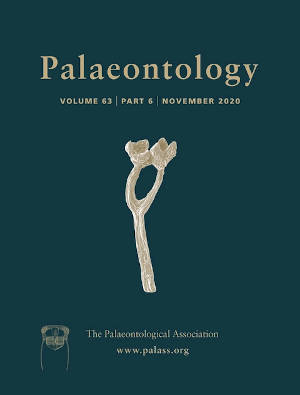Reg. Charity No. 1168330

Lobopodians, a paraphyletic group of rare but morphologically diverse Palaeozoic vermiform animals bearing metameric appendages, are key to the origin of extant panarthropods. First discovered in 1983 on Mount Stephen (Yoho National Park, British Columbia), the Cambrian (Wuliuan) Burgess Shale lobopodian nicknamed ‘Collins’ monster’ is formally described as Collinsovermis monstruosus gen. et sp. nov. A formal systematic treatment of the comparable and poorly known lobopodian Acinocricus stichus from Utah is also provided. The body of Collinsovermis is plump and compact but shows the diagnostic suspension‐feeding characters of luolishaniid lobopodians. It possesses 14 contiguous pairs of lobopods, lacking space between them. The 6 anterior pairs are elongate, adorned with about 20 pairs of long and slightly curved ventral spinules arranged in a chevron‐like pattern. These appendages terminate in a pair of thin claws and their dorsal surfaces are covered in minute spines or setae. The 8 posterior lobopod pairs, which attach to a truncated body termination, are stout and smooth, each terminated by a single strong recurved claw. Each somite bears a pair of dorsal spines; somites 4 and posteriad bear an additional median spine. The spines on somites 1–3 are much shorter than the spines on the remaining somites. The head is short, bears a terminal mouth and a pair of antenniform outgrowths, and is covered by an oblong sclerite. Collinsovermis, plus Collinsium and Acinocricus, are found to comprise a sub‐group of stout luolishaniid lobopodians with remarkably long spinules on the front lobopods, interpreted here as a clade (Teratopodidae fam. nov.) This clade is distinct from both the comparatively slenderer Luolishania and a sub‐group composed of Facivermis and Ovatiovermis lacking body sclerites. Luolishaniids were mostly sessile forerunners of arthropods that had coupled efficient suspension‐feeding devices and, as in Collinsovermis, strong defensive or deterrent features.